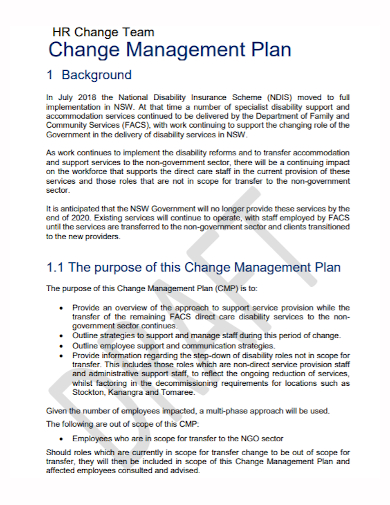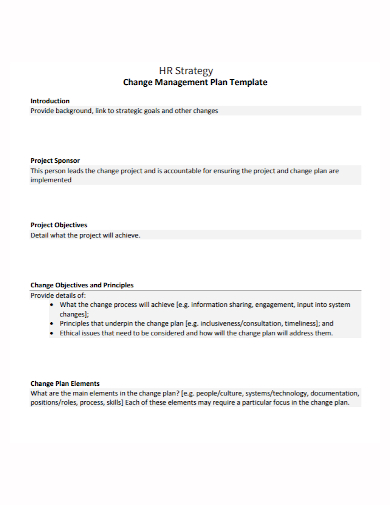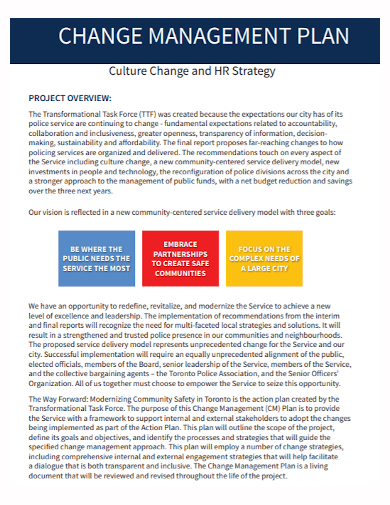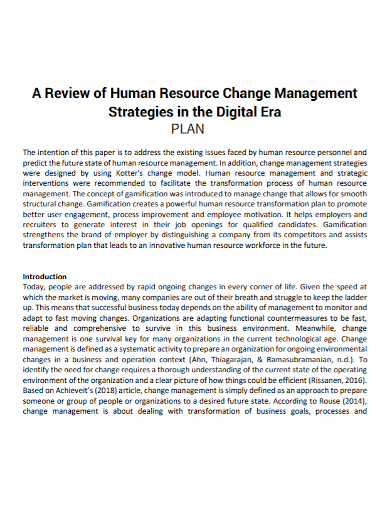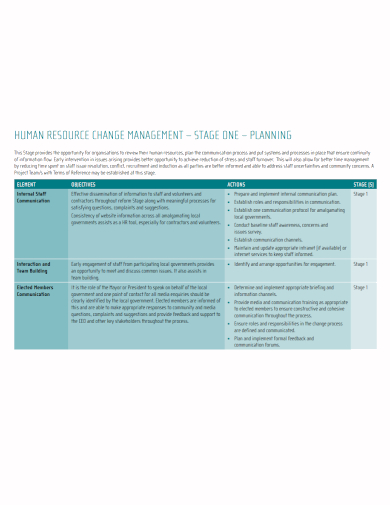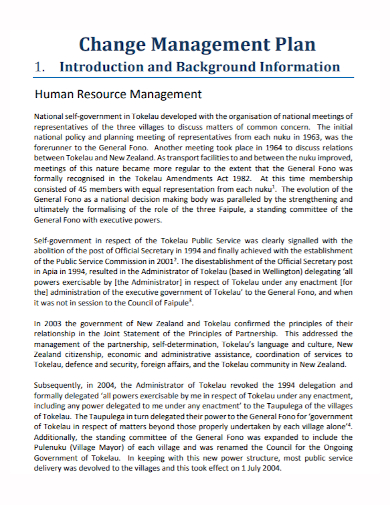They say that change is the only constant thing in this world. Change can either be a good thing or a bad thing. For an organization, especially, change can be disorienting. However, for businesses to succeed and expand, they must undergo organizational transformation. A systematic strategy to coping with the transition or transformation of an organization’s goals, processes, or technologies is known as change management. The goal of change management is to put in place techniques for bringing about change, controlling it, and assisting people in adapting to it. If you need some assistance in planning your management change, look no further! In this article, we provide you with free and ready-to-use samples of Change Management Plans in PDF and DOC formats that you could use for your organization. Keep on reading to find out more!
7+ HR Change Management Plan Samples
1. HR Change Management Plan Template
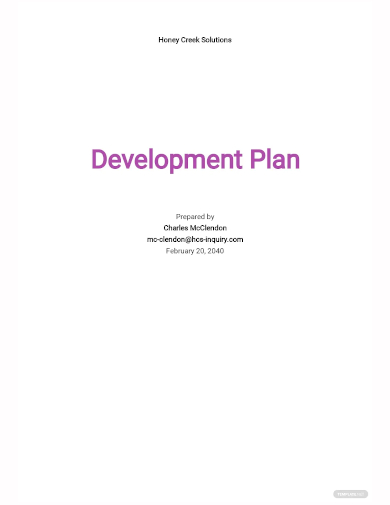
2. HR Change Team Management Plan
3. HR Change Management Plan
4. HR Strategy Change Management Plan
5. HR Change Management Digital Plan
6. Sample HR Change Management Plan
7. Standard HR Change Management Plan
8. HR Organization Change Management Plan
What Is a Change Management Plan?
Change management is responsible for the successful adoption and implementation of change in the workplace. It enables employees to comprehend the shift, commit to it, and operate efficiently during it.
A change management plan is a road map that lays out the specific measures that an organization will take to carry out the change management process. When business operations are affected by change, a change management plan is required to minimize disrupting workflow and to assist the team in navigating the transition. During the project’s execute and control stages, it outlines actions and roles for managing and controlling change. So, if you look at a project’s life cycle, you start the project, plan it, execute it, monitor it, govern it, and ultimately close it.
How to Make a Change Management Plan
Change is constant and required for development and profitability. A consistent change management plan will help to reduce the impact on your company and employees. A Change Management Plan template can help provide you with the framework you need to ensure that you have a well-written and robust plan in hand. You can do so by choosing one of our excellent templates listed above.
1. Determine what needs to be improved.
Most adjustments are made to improve a process, a product, or a result, it’s critical to focus on the most important aspects and create clear goals. Most change management strategies acknowledge that determining what needs to be improved provides a firm foundation for clarity, ease, and success. This includes identifying the resources and individuals who will assist in the facilitation and leadership of the project.
2. Create the plan.
This is the blueprint that shows where to start, how to get there, and where to end up. The strategy will also include the resources to be leveraged, the scope or purpose, and the expenditures. Providing a multi-step approach rather than abrupt, unexpected expansive adjustments is an important part of planning. This entails laying out the project in a logical order, complete with quantifiable goals, incentives, measures, and analysis.
3. Present a strong business strategy to your stakeholders.
Upper management, who both lead and finance the initiative, promoters of the process, and those who are directly responsible with implementing the new normal are among the stakeholders. Each change framework has its own approach for onboarding the many stakeholders, but they all have goals that require time, patience, and communication.
4. Keep an eye on any potential problems with resistance, dependency, and finances.
Although resistance is a normal part of change management, it can threaten the success of a project. The majority of opposition is motivated by fear of the unknown. It also occurs because change carries a large amount of risk: the risk of harming dependents, the risk of a bad return on investment, and the risk of devoting cash to something new. Anticipating and planning for opposition by equipping leaders with the necessary skills can aid in a smooth transition.
FAQs
What is the difference between the three methods of change management?
Developmental, transitional, and transformational change management are three forms of change management that may be applied to directed change. It’s crucial to understand this because different types of change need distinct techniques and plans for gaining involvement, reducing resistance, and facilitating acceptance.
What is the definition of a change management tool?
Anything that may be utilized to ease tensions that occur during a change in procedure, people, or software is referred to be a change management tool.
Why is it so tough to handle change management?
Bringing about change in an organization necessitates a steadfast commitment to including people and their ideas in the process. The majority of change attempts fail due to a lack of knowledge of organizational change dynamics.
Overall, firm transitions may be difficult and costly in terms of both time and resources if appropriate organizational change management is not implemented. To help you get started, download our easily customizable and comprehensive Change Management Plan samples today!
Related Posts
FREE 10+ HR Consulting Business Plan Samples
FREE 10+ HR Scope of Work Samples
FREE 9+ Sample Management Action Plan
FREE 9+ Sample Impact Assessment
FREE 9+ Human Resource Management Job Description Samples
FREE 8+ Requirements Management Plan Samples
FREE 4+ Behaviour Management Strategy Samples
FREE 4+ Sample Configuration Management Plan
FREE 21+ Sample HR Strategy
FREE 11+ Security Operational Plan Samples
FREE 11+ Sample HR Proposals
FREE 10+ Talent Management Strategy Samples
FREE 10+ Employee Status Change Worksheet Samples
FREE 10+ Project Communication Plan Samples
FREE 7+ Stakeholder Management Strategy Samples

